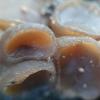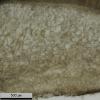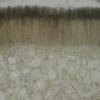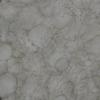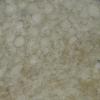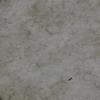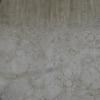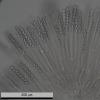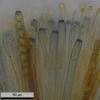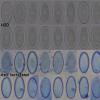
04-03-2015 09:45
 Miguel 횁ngel Ribes
Miguel 횁ngel Ribes
Hello friendsThis small, < 1 cm Peziza, was gro

20-02-2015 00:25
 Miguel 횁ngel Ribes
Miguel 횁ngel Ribes
Good night againThis dark-violet, 4-5 mm Marcellei

11-03-2015 13:20
Chris JohnsonGreeting allFound on Bos taurus. Apothecia no more

10-03-2015 20:20
HI again Could you help me혻for to obtain 혻this

10-03-2015 08:40
Ascospores 8-9,5 * 13-18 쨉m in diameter.Fuond wit

08-03-2015 16:33
Chris JohnsonBonjourThis perithecium was found on Rabbit (Oryct
Peziza 210215 on bodies of wasps
Miguel 횁ngel Ribes,
04-03-2015 09:45
 Hello friends
Hello friendsThis small, < 1 cm Peziza, was growing on remnants of dead wasp, on a nest of wasp.
Asci cylindrical, operculate, IKI +,혻(269.1) 278.8 - 322.0 (333.6) x (11.4) 13.5 - 16.8 (17.7) 쨉m;혻N = 34; Me = 295.0 x 15.1 쨉m.
Spores elipsoidal to slightly fusiform, with a very clear nucleus and 2 small guttules at ends, smooth or only slightly ornamented, (15.9) 16.4 - 18.0 (18.9) x (8.0) 8.3 - 9.2 (9.5) 쨉m;혻Q = (1.8) 1.83 - 2.1 (2.2); N = 67;혻Me = 17.1 x 8.7 쨉m ; Qe = 2.0
Paraphysis cylindrical with slightly broad apex.
Ectal excipulum light-brown with textura sublogosa-angularis.
Medullar excipulum with two layers: superior with textura globose and big cells and inferior with textura cylindrical-intricata.
I don't find any similar Peziza.
Thank you.
Miguel 횁. Ribes
Miguel 횁ngel Ribes,
11-03-2015 21:03

Re : Peziza 210215 on bodies of wasps
Perhaps I must describe a new Peziza "vesparum", jejeje.
Any help?
Thank you
Any help?
Thank you
Peter P체wert,
11-03-2015 21:51
Re : Peziza 210215 on bodies of wasps
Hi Miguel,
the collection remind me slight at Peziza fimeti ss. Dennis, Seaver.
Greetings Peter.
the collection remind me slight at Peziza fimeti ss. Dennis, Seaver.
Greetings Peter.
Miguel 횁ngel Ribes,
11-03-2015 23:04

Re : Peziza 210215 on bodies of wasps
Hi Peter
It is a good candidate, it fits Ok with papers and pages I see in the internet, but I can't find Dennis description of this Peziza, MycoBank has only information of P. fimeti (Fuckel) Seaver.
Thank you.
It is a good candidate, it fits Ok with papers and pages I see in the internet, but I can't find Dennis description of this Peziza, MycoBank has only information of P. fimeti (Fuckel) Seaver.
Thank you.



